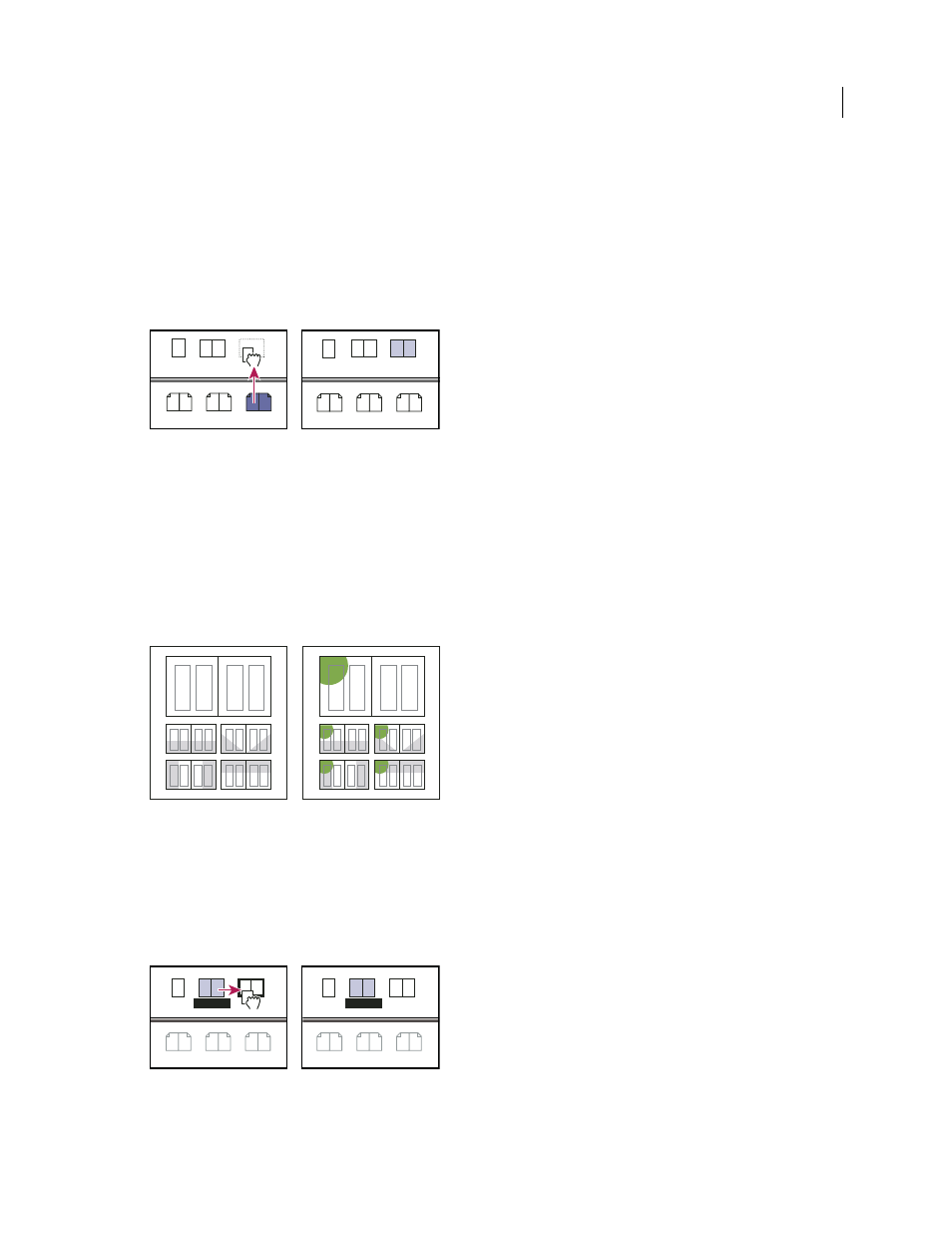Base one master on another, Create a master from an existing page or spread – Adobe InDesign CS5 User Manual
Page 78

72
USING INDESIGN
Layout
Last updated 11/16/2011
•
For Number Of Pages, type a value for the number of pages you want in the master spread (as many as ten).
Create a master from an existing page or spread
•
Drag an entire spread from the Pages section of the Pages panel to the Masters section.
•
Select a spread in the Pages panel and choose Save As Master from the Pages panel menu.
Any objects on the original page or spread become part of the new master. If the original page used a master, the new
master is based on the original page’s master.
Creating a new master spread based on another page or spread
Base one master on another
You can create a master variation that is based on and updates with another master (called the parent master) within
the same document. The master spreads based on the parent master are called child masters. For example, if your
document has ten chapters that use master spreads that vary only slightly, base all of them on a master spread that
contains the layout and objects common to all ten. This way, a change to the basic design requires editing just the
parent master instead of editing all ten separately. Vary the formatting on your child masters. You can override parent
master items on a child master to create variations on a master, just as you can override master items on document
pages. This is a powerful way to keep a consistent yet varied design up to date.
Original parent and child masters (left); when the parent master is modified, the child masters are automatically updated (right)
❖
To base one master on another, in the Masters section of the Pages panel, do either of the following:
•
Select a master spread, and choose Master Options for [master spread name] in the Pages panel menu. For Based
On Master, choose a different master, and click
OK.
•
Select the name of the master spread you want to use as the base and drag it onto the name of another master to
apply it.
B-Master based on A-Master
None
4–5
6–7
8–9
None
4–5
6–7
8–9
A-Master B-Master
A-Master
[None]
10–11
12–13
14–15
[None]
10–11
12–13
14–15
A-Master
B-Master
A-Master
B-Master
A
A
